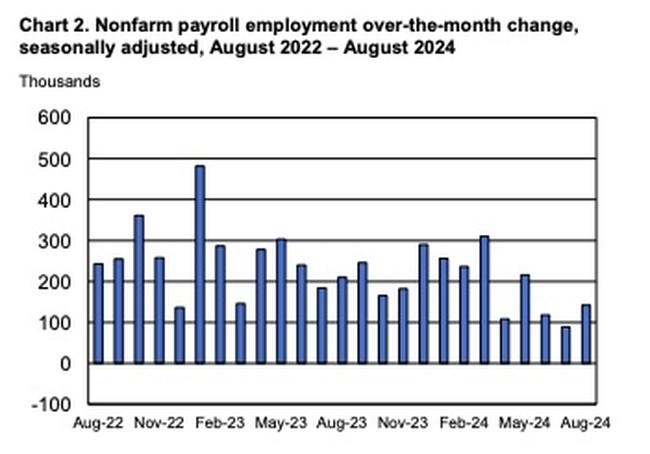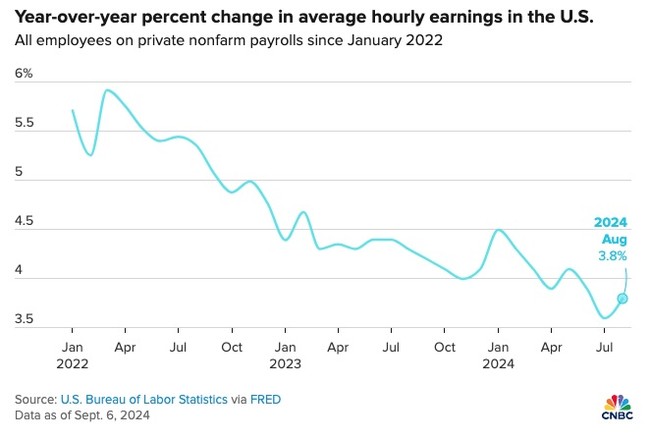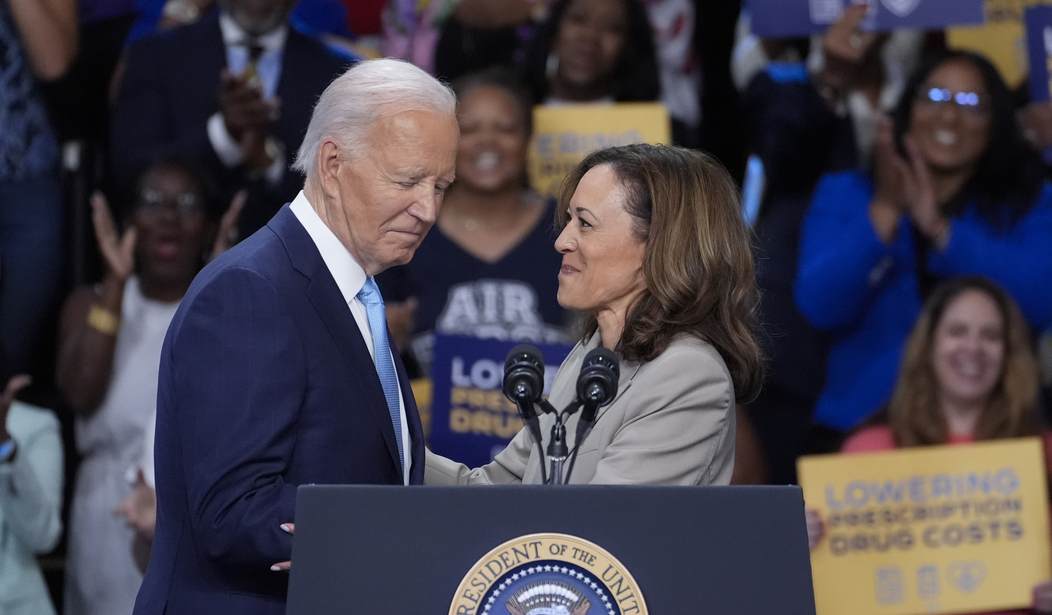Count this as another miss on expectations, and at a particularly poor time for an incumbent administration seeking another term. Economists expected a mediocre return to normalcy in the job market for August after July's report showed only a shocking 89,000 jobs added. The consensus set the mark at 161K, a figure that barely would be above economy-maintenance level.
Instead, the US added 142,000 jobs in August -- an improvement, but not an impressive one:
Total nonfarm payroll employment increased by 142,000 in August, and the unemployment rate changed little at 4.2 percent, the U.S. Bureau of Labor Statistics reported today. Job gains occurred in construction and health care. ...
Both the unemployment rate, at 4.2 percent, and the number of unemployed people, at 7.1 million, changed little in August. These measures are higher than a year earlier, when the jobless rate was 3.8 percent, and the number of unemployed people was 6.3 million.
Among the major worker groups, the unemployment rates for adult men (4.0 percent), adult women (3.7 percent), teenagers (14.1 percent), Whites (3.8 percent), Blacks (6.1 percent), Asians (4.1 percent), and Hispanics (5.5 percent) showed little or no change in August. (See tables A-1, A-2, and A-3.)
Among the unemployed, the number of people on temporary layoff declined by 190,000 to 872,000 in August, mostly offsetting an increase in the prior month. The number of permanent job losers was essentially unchanged at 1.7 million in August.
Needless to say, this isn't a very impressive result, especially coming after such a poor month in July. And as this chart shows, it's not an outlier, but a trend:
 Thats not looking good no matter how much spin the media will give today's number. With the exception of a four-month burst last winter, job creation has trended mainly downward over the last two years. And needless to say, this report -- like most these days -- offered sharp downward revisions from the previous two months, which are reflected in the chart above:
Thats not looking good no matter how much spin the media will give today's number. With the exception of a four-month burst last winter, job creation has trended mainly downward over the last two years. And needless to say, this report -- like most these days -- offered sharp downward revisions from the previous two months, which are reflected in the chart above:
The change in total nonfarm payroll employment for June was revised down by 61,000, from +179,000 to +118,000, and the change for July was revised down by 25,000, from +114,000 to +89,000. With these revisions, employment in June and July combined is 86,000 lower than previously reported.
These revisions are separate from the revision made by the annual recalculation by BLS. That took over 800,000 previously reported new jobs out of the BLS baseline going back to March.
CNBC's Jeff Cox notes that wages and hours are a bright spot in this report, but their chart throws some cold water on that too. Cox also notes that the US hit a three-year high on the level of discouraged workers in the labor force:
The labor force expanded by 120,000 for the month, helping push the jobless level down by 0.1 percentage point, though the labor force participation rate held at 62.7%. An alternative measure that includes discouraged workers and those holding part-time jobs for economic reasons edged up to 7.9%, its highest reading since October 2021. ...
On wages, average hourly earnings increased by 0.4% on the month and 3.8% from a year ago, both higher than the respective estimates for 0.3% and 3.7%. Hours worked edged higher to 34.3.
Yes, but ...
 That data correlates with the job-growth chart above, at least roughly. When job creation falls, wage pressure declines as well. Also, don't forget that the wage growth in 2022 came in part from inflation pressures. The level of wage growth in today's report is well above the current inflation level, but that's not always been the case for the data in this chart.
That data correlates with the job-growth chart above, at least roughly. When job creation falls, wage pressure declines as well. Also, don't forget that the wage growth in 2022 came in part from inflation pressures. The level of wage growth in today's report is well above the current inflation level, but that's not always been the case for the data in this chart.
So now what? The data clearly shows that July's report wasn't an outlier, but part of a decline in the job market. Today's data -- even if it holds up after next month's revision -- is nothing more than job creation keeping pace with population expansion. Bidenomics is running out of gas, if it ever had any, and that has implications for both the election and the Federal Reserve, as the Wall Street Journal reminds us this morning:
The big question in recent weeks has been whether the summer jolt was momentary—perhaps a result of Hurricane Beryl curbing hiring—or evidence of a broader deceleration of the economy. Analysts looked to Friday’s jobs report for clues.
The answer promises to be a potent issue in the presidential campaign, where Vice President Kamala Harris is broadly pitching an extension of President Biden’s agenda and GOP nominee Donald Trump promises a return to his prepandemic economy. The outlook will also shape how aggressively the Fed eases its monetary policy that shapes borrowing costs for businesses and consumers.
While Fed Chair Jerome Powell has said the Fed is ready to cut, it is unclear whether the central bank at its Sept. 17-18 meeting will shave off a quarter-percentage point from its target rate or try to pre-empt additional labor market weakness with a half-point cut. In recent days, futures markets priced in a better chance that the Fed will take the more gradual route.
With the PCE Index still above 2%, expect a more modest cut in September. Powell will be sensitive to accusations that a more aggressive policy will be for the political benefit of the incumbent administration, and besides, inflation has not yet been fully tamed.
And expect Trump and Vance to jump all over this report in days to come.







Join the conversation as a VIP Member